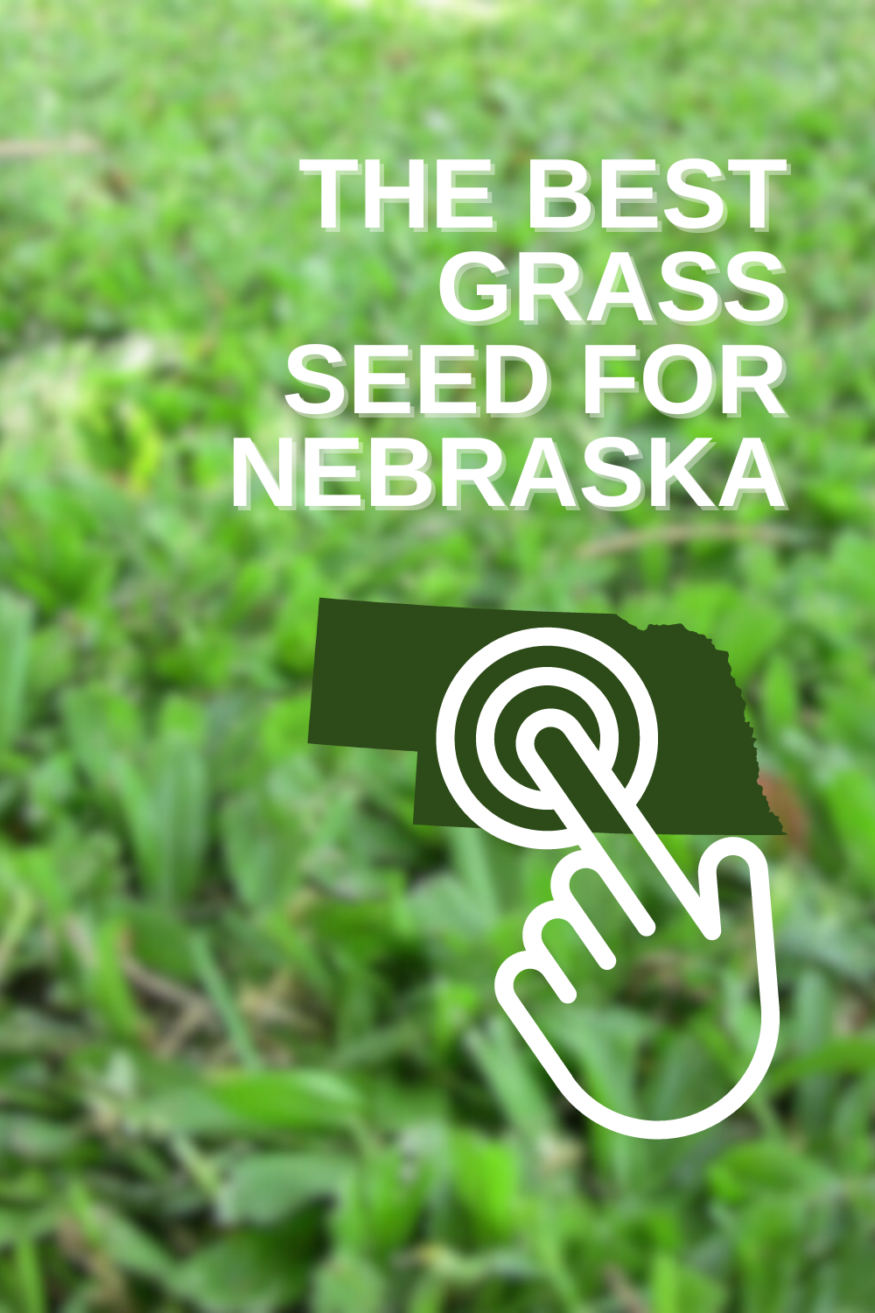Nebraska’s diverse climate and varying landscapes pose unique challenges for homeowners looking to maintain a healthy and vibrant lawn. The key to success lies in selecting the right grass seed for your specific needs and conditions. Different grass species thrive in different environments, so it is essential to choose a suitable type for your lawn to ensure it can withstand Nebraska’s climate and growing challenges.
Some popular grass seed choices for Nebraska include Kentucky bluegrass, fine fescue, tall fescue, Bermuda grass, and Zoysia grass. It is crucial to take into account factors like soil type, sunlight availability, and the amount of foot traffic before determining the best grass seed for your lawn. Once you have found the right type, proper lawn care techniques, and regular maintenance will help keep your lawn looking lush and green.
- Selecting the right grass seed is crucial for a flourishing Nebraska lawn.
- Kentucky bluegrass is a top choice for Nebraska lawns, thriving in the state’s climate. It requires moderate water and maintenance.
- Fine fescue performs well in shady areas and well-drained soil, and it’s known for its fine texture and adaptability.
- Tall fescue is adaptable and resilient, requiring less mowing compared to Kentucky bluegrass.
- Bermuda grass is versatile, offering heat and drought tolerance, but requires moderate to high maintenance.
- Zoysia grass is attractive for its drought tolerance and low maintenance needs, but it’s not well-suited for extremely cold winters.
- Consider factors like soil type, sunlight, and traffic when choosing grass seed.
- Proper care and maintenance ensure long-lasting, healthy lawns in Nebraska’s diverse climate.
Looking for the best grass seed for your region?
Our smart lawn plans are designed to work perfectly with your local soil and climate conditions, without any of the toxic stuff.
Use the code EHG20 for an instant $20 discount!
- Personalized lawn care: Custom lawn plans based on soil analysis, climate data, and your specific lawn needs.
- Convenience with a conscience: Products that are not only easy to use but also safe for you, your pets, and the planet.
- Science-backed formulas: Bio-based formulas contain effective, natural ingredients like seaweed, molasses, and iron.
- Expert support: Get one-on-one guidance from a real person and rest easy with Sunday's satisfaction guarantee.
Kentucky Bluegrass
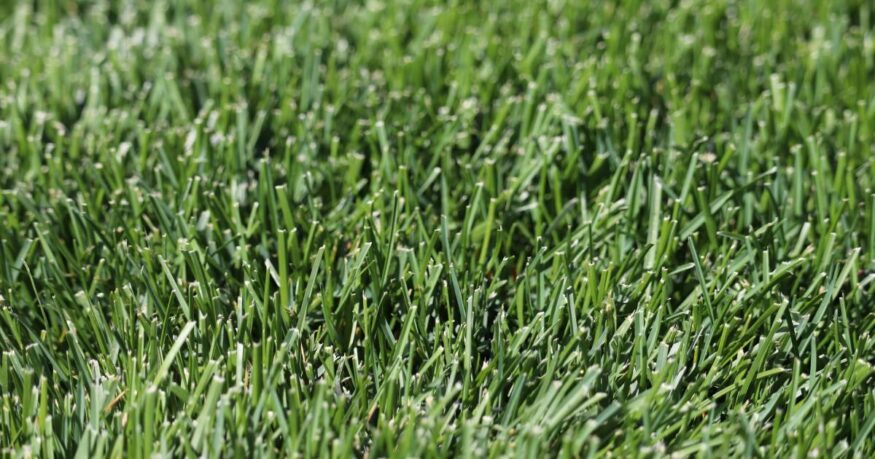
| Also Known As | Poa pratensis L. |
| Type of Grass | Cool season perennial |
| Optimal Zones | Northern cool season zone, transition zones |
| Root Structure | Shallow |
| Winter Hardiness | Excellent |
| Shade Tolerance | Poor to Good |
| Water Requirements | High |
| Drought Tolerance | Poor |
| Self Repair Capacity | Excellent |
| Overall Maintenance Requirements | High |
Why Kentucky Bluegrass is The Most Popular Choice For Nebraska
When looking for the best grass seed for Nebraska lawns, Kentucky bluegrass stands out as a top choice. It’s widely considered the best adapted grass throughout the state, with a few exceptions in eastern Nebraska.
Kentucky bluegrass produces an attractive, medium-textured turf with a rich green color. You’ll appreciate its dense growth pattern, which helps create a beautiful and uniform lawn. This cool-season grass is known for its ability to withstand cold temperatures and seasonal fluctuations in Nebraska’s climate.
One downside to Kentucky bluegrass is that it requires a moderate amount of water and maintenance. To ensure a healthy lawn, be prepared to provide regular irrigation during droughts and mow at the recommended height of 2.5 to 3 inches.
For optimal growth, you should plant Kentucky bluegrass during the cooler months of late summer or early fall. Springtime planting is also an option, but cool-season grasses like Kentucky bluegrass and tall fescue grow better when established in the former.
When it comes to lawn care products, using a high-quality fertilizer helps to promote strong growth and enhance the color of your Kentucky bluegrass lawn. Pair it with regular weed control practices to keep your lawn looking pristine.
If you want a great-looking, cool-season lawn in Nebraska, Kentucky bluegrass is a fantastic choice. However, be prepared to put in some effort to keep it well-maintained and properly watered. With a little care, you’ll be rewarded with a stunning, lush turf that’s perfect for your outdoor activities.
Learn More: Read our comprehensive state-by-state grass selection guides here.
Fine Fescue
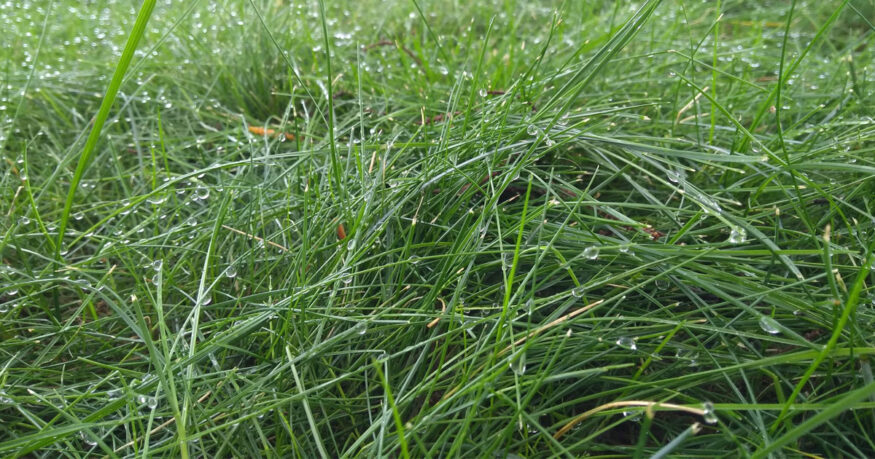
| Also Known As | Hard fescue, strong creeping red fescue, slender creeping red fescue, sheep fescue, chewings fescue; Festuca L. |
| Type of Grass | Cool season perennial |
| Optimal Zones | Northern zones |
| Root Structure | Medium |
| Winter Hardiness | Excellent |
| Shade Tolerance | Excellent |
| Water Requirements | Medium to High |
| Drought Tolerance | Excellent |
| Self Repair Capacity | Limited |
| Overall Maintenance Requirements | Low |
What Makes Fine Fescue A Great Grass For Nebraska
Another option for lawns in Nebraska is Fine Fescue.. It performs well in shady areas and on well-drained soil.
Fine Fescue is a group of cool-season grasses that usually include creeping red, hard, and chewings fescue. These grasses are known for their fine texture and adaptability to a variety of conditions. The fine leaf blades of this grass type create a soft, dense turf that is ideal for lawn aesthetics and play areas.
One major advantage of Fine Fescue is its shade tolerance. It can perform better in shaded areas than other grass options like Kentucky Bluegrass or Tall Fescue. However, it’s important to avoid overwatering and ensure proper soil drainage for optimal growth.
Watering requirements for Fine Fescue are generally lower than other grass types. It is fairly drought-tolerant, which makes it suitable for Nebraska’s varied climate. Also, it can withstand occasional foot traffic and requires less frequent mowing compared to other popular lawn grasses.
When caring for your Fine Fescue lawn, it’s essential to use correct mowing height. Aim to maintain a height of around 2-3 inches for optimal grass health. Ensure to apply a balanced fertilizer that matches your specific soil conditions for the best results.
Keep in mind, while Fine Fescue is a good option for shaded areas, it may not perform as well in areas with heavy foot traffic or in poor soil conditions. It might be worth considering a grass seed mix that includes other grass varieties such as Kentucky Bluegrass or Tall Fescue, depending on your specific lawn needs and location.
Overall, Fine Fescue can be a great choice for your Nebraska lawn with its shade tolerance, low maintenance requirements, and adaptability to environmental conditions. So, consider giving it a try for a comfortable and lush green lawn.
Looking for the best grass seed for your region?
Our smart lawn plans are designed to work perfectly with your local soil and climate conditions, without any of the toxic stuff.
Use the code EHG20 for an instant $20 discount!
- Personalized lawn care: Custom lawn plans based on soil analysis, climate data, and your specific lawn needs.
- Convenience with a conscience: Products that are not only easy to use but also safe for you, your pets, and the planet.
- Science-backed formulas: Bio-based formulas contain effective, natural ingredients like seaweed, molasses, and iron.
- Expert support: Get one-on-one guidance from a real person and rest easy with Sunday's satisfaction guarantee.
Tall Fescue
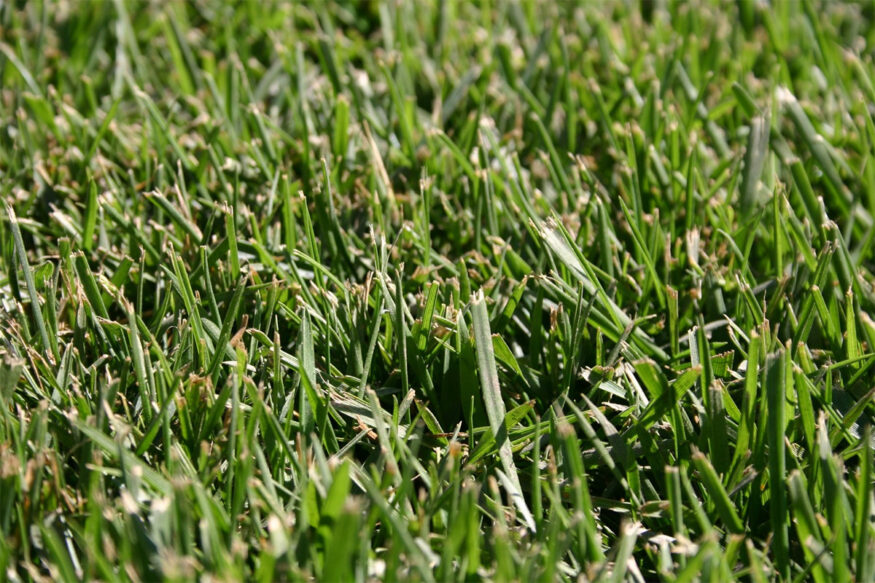
| Also Known As | Lolium arundinaceum (formerly Festuca arundinacea) |
| Type of Grass | Cool season perennial |
| Optimal Zones | Northern through transition zones |
| Root Structure | Deep |
| Winter Hardiness | Excellent |
| Shade Tolerance | High |
| Water Requirements | Medium to High |
| Drought Tolerance | Excellent |
| Self Repair Capacity | Limited |
| Overall Maintenance Requirements | Low |
Why Tall Fescue Grows well in Nebraska
Tall Fescue is a great choice for your Nebraska lawn due to its adaptability and resilience. This dark green, fine-textured turfgrass thrives in the state’s climatic conditions and sports a deep root system, giving it an edge over other grass types.
One of the pros of Tall Fescue is that it requires less mowing compared to Kentucky bluegrass. However, it’s not as drought or shade tolerant, preferring full sun or partial shade. Its ability to resist disease and handle foot traffic make it a popular choice for lawns and sports turf.
When it comes to planting, the best time to establish Tall Fescue is late summer or early fall. You can also plant it in early spring, but be prepared for slightly less successful establishment.
Watering Tall Fescue is crucial, especially during the first few weeks after planting. After establishment, gradually reduce your watering frequency, allowing the grass to develop drought tolerance. In return, your lawn will stay green even during dry spells.
Regular mowing helps maintain a healthy Tall Fescue lawn. Maintain a mowing height of around 3 to 4 inches, ensuring you don’t trim more than one-third of the grass height at once. This promotes deeper root growth and keeps your lawn looking neat.
For a luscious, green lawn, don’t forget to fertilize your Tall Fescue. Apply an all-purpose lawn fertilizer following the manufacturer’s recommended schedule and application rates. By doing so, you’re ensuring essential nutrients reach your grass, boosting its overall health and appearance.
Tall Fescue is a suitable choice for your Nebraska lawn, offering a balance of low maintenance and visual appeal. By following these basic care tips, your lawn will remain vibrant and healthy throughout the year.
Bermuda Grass
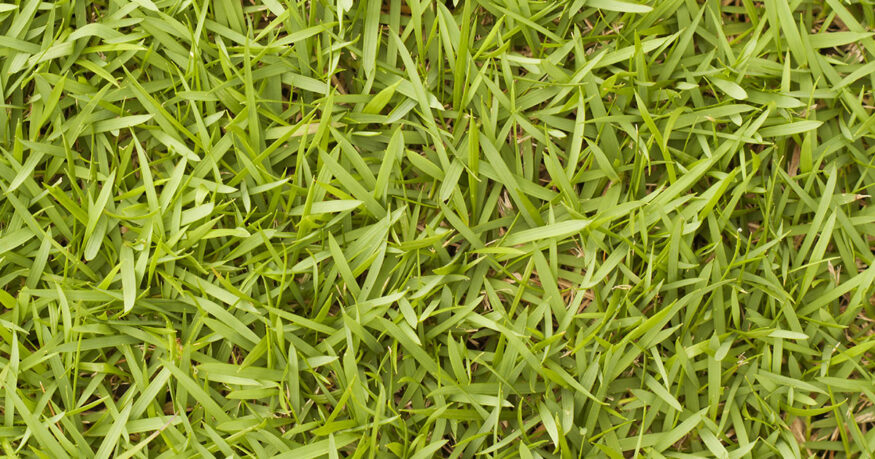
| Also Known As | Bermuda grass, wiregrass; Cynodon dactylon L. |
| Type of Grass | Warm season perennial |
| Optimal Zones | Southern region |
| Root Structure | Deep |
| Winter hardiness | Poor |
| Heat tolerance | Excellent |
| Shade tolerance | Poor |
| Water Requirements | High |
| Drought Tolerance | High |
| Self Repair Capacity | Excellent |
| Overall Maintenance Requirements | Moderate to High |
Why Bermuda Grass Is a Popular Grass seed Choice
When looking for the best seed for your Nebraska lawn, Bermuda grass is a great option. This versatile grass type adapts well to Nebraska’s climate, offering both heat and drought tolerance.
Bermuda grass is favored for its fine texture and dense turf, making it ideal for sports fields and golf courses. However, it’s important to keep in mind that Bermuda grass requires a moderate to high amount of maintenance.
To keep your Bermuda grass looking its best, you’ll need to water it regularly, especially during dry periods. Aim for at least 1 inch of water per week to maintain its healthy green color.
In addition to regular watering, maintaining a proper mowing height is crucial for Bermuda grass. Your mowing height should be between 0.5 to 1.5 inches, depending on the specific variety and use of the lawn.
Zoysia Grass
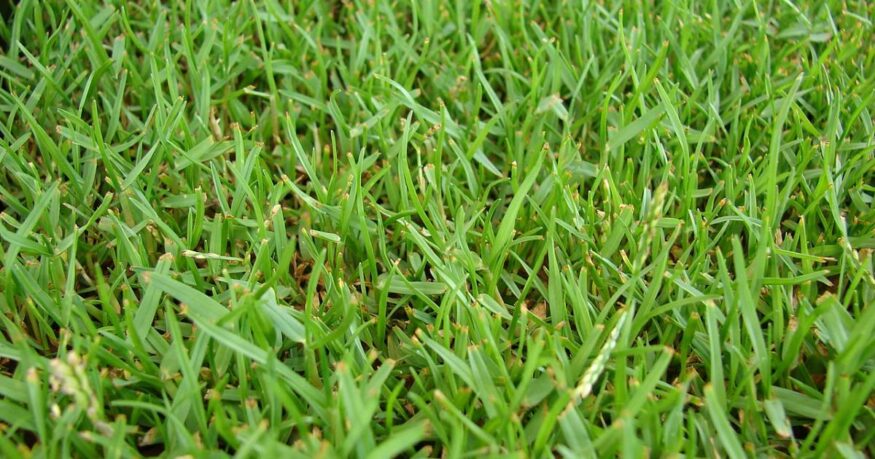
| Also Known As | Zoysiagrass; Zoysia sp. |
| Type of Grass | Warm season perennial |
| Optimal Zones | Southern through warmer transition zones |
| Root Structure | Shallow to medium |
| Winter hardiness | Good |
| Heat tolerance | Excellent |
| Shade tolerance | Partial |
| Water Requirements | Medium |
| Drought Tolerance | Good |
| Self Repair Capacity | Low |
| Overall Maintenance Requirements | Moderate |
Why Zoysia Is a great Grass seed Choice
Zoysia grass is an attractive option for your Nebraska lawn due to its drought tolerance and low maintenance needs. It thrives in various soil conditions and can handle moderate levels of foot traffic, making it a versatile choice for your yard.
One of the noteworthy benefits of Zoysia is its tolerance to heat. In the warmer parts of Nebraska, this drought-tolerant grass will fare well during the hot summer months, conserving water and requiring less care.
However, it’s essential to know that Zoysia is not well-suited for extremely cold winters. If you live in an area with freezing temperatures, consider planting it during the fall season to allow its roots to establish before winter sets in.
To ensure the best results with Zoysia grass, maintain a mowing height of about 2 inches and adopt a consistent watering schedule. Don’t worry – Zoysia is flexible and can handle a varying range of care routines.
Another advantage of Zoysia is its ability to create a thick, lush lawn that helps crowd out weeds. However, this might also mean a bit of extra work when it comes to cutting, as the density can be challenging for mowers.
Zoysia grass comes in several varieties, such as Emerald and El Toro. These different types provide you with options to select the one that best suits your specific lawn needs and aesthetic preferences.
When selecting a Zoysia grass seed mix, keep in mind your zone, climate, and specific landscape requirements. Don’t hesitate to consult professionals or seek advice from local nurseries to make the best choice for your Nebraska lawn.
Nebraska’s Climate And Growing Challenges For Lawns
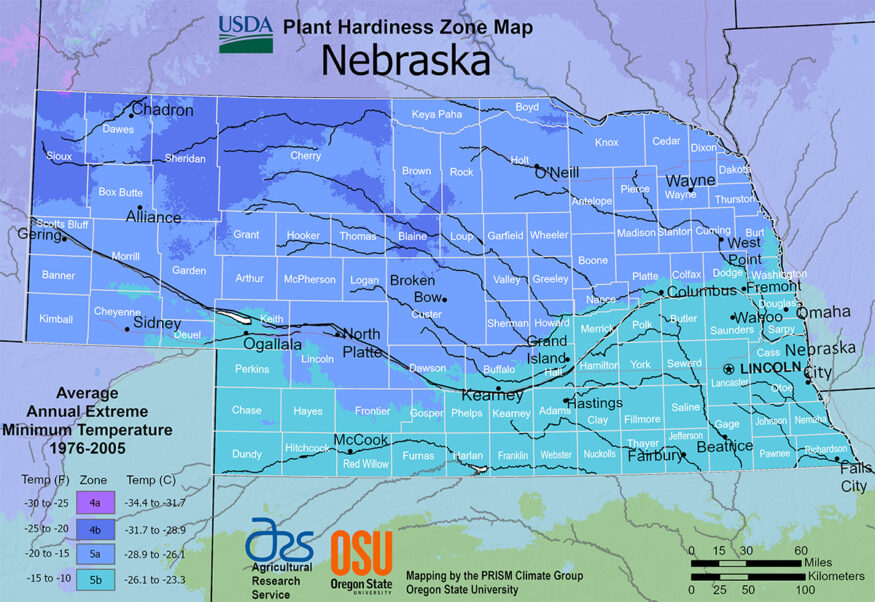
Climate
Nebraska experiences extreme temperature fluctuations and varying moisture levels, making it a challenge to maintain a healthy lawn. To combat these climate challenges, choose grass varieties like Kentucky bluegrass or tall fescue that are well-adapted to the region’s weather conditions.
Soil Conditions
The state’s soil can range from sandy to clay, affecting the growth of your lawn grasses. It’s essential to test your soil and amend it, if necessary, to provide the best possible environment for your selected grass seed. You could add organic matter like compost to improve soil fertility.
Weeds
Weeds compete with your lawn for nutrients, light, and water, so keeping them under control is crucial. Apply pre-emergent herbicides in early spring, and use post-emergent herbicides when necessary.
Regular mowing and maintaining proper lawn care practices will also help minimize weed problems.
Pests & Diseases
Nebraska lawns are susceptible to various pests and diseases, such as grubs, sod webworms, and dollar spot. Keep an eye out for any signs of infestations or fungal infections, and treat them accordingly with insecticides or fungicides.
Ensuring that your lawn is adequately irrigated and fertilized will also help maintain its health and prevent pests and diseases.
Other Challenges
In addition to the challenges mentioned above, Nebraska homeowners must also consider the need for drought-tolerant grasses, especially during periods of water restrictions. Opting for drought-tolerant varieties like Fine Fescue can be a great solution, while also incorporating efficient irrigation practices like watering your lawn early in the morning to maximize water uptake.
Looking for the best grass seed for your region?
Our smart lawn plans are designed to work perfectly with your local soil and climate conditions, without any of the toxic stuff.
Use the code EHG20 for an instant $20 discount!
- Personalized lawn care: Custom lawn plans based on soil analysis, climate data, and your specific lawn needs.
- Convenience with a conscience: Products that are not only easy to use but also safe for you, your pets, and the planet.
- Science-backed formulas: Bio-based formulas contain effective, natural ingredients like seaweed, molasses, and iron.
- Expert support: Get one-on-one guidance from a real person and rest easy with Sunday's satisfaction guarantee.
